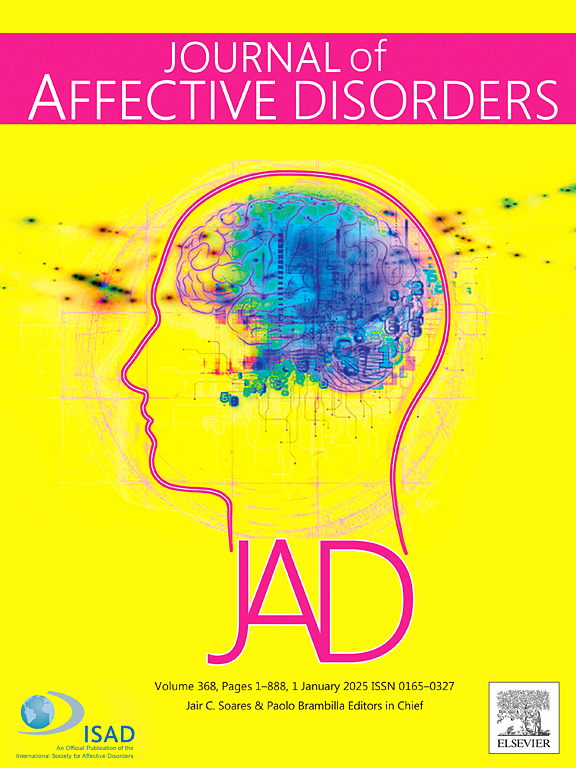Neural dynamics of social anxiety during and after anxiety-provoking and relaxation-inducing: A task and resting-state fMRI study
IF 4.9
2区 医学
Q1 CLINICAL NEUROLOGY
引用次数: 0
Abstract
Background
Social anxiety disorder (SAD) is marked by intense fear of social situations and negative evaluation. This study investigated neural effects of SAD-specific imagery scripts and their relationships with Brief Fear of Negative Evaluation (BFNE).
Methods
Thirty-six SAD and 32 healthy controls underwent four five-minute fMRI runs: anxiety-provoking imagery, rest, relaxing imagery, and rest. The order of imageries was counterbalanced. Functional connectivity analysis and connectome-based predictive modeling with respect to BFNE were performed using six seed regions, including the bilateral amygdala, left hypothalamus, bilateral dorsomedial prefrontal cortex (DMPFC), left ventromedial PFC (VMPFC), and left posterior cingulate cortex (PCC).
Results
Group × task interaction effects were found in connectivity of left amygdala-right cerebellum, left PCC-bilateral superior frontal gyrus, and left PCC-right posterior middle temporal gyrus, and group × engagement effects were discovered in left hypothalamus-bilateral DMPFC and left VMPFC-right DMPFC couplings. Group × task × engagement interactions highlighted aberrant functional connections of right amygdala-left VMPFC, DMPFC-left DLPFC, and left VMPFC-bilateral supplementary motor area in SAD. Patterns of connectivity predicted the BFNE scores in various segments of imagery conditions.
Limitations
Patient's medication, physiological measures were not considered. Noisy nature of fMRI could have interfered participants from focusing.
Conclusions
Our results revealed disrupted functional connections associated with emotion dysregulation and overly self-referent thinking in SAD. Markedly, patients showed maladaptive responses related to relaxation-inducing blocks, challenging the expected relaxation response. Overall findings emphasized inappropriate engagements of various processes in relaxing circumstances that do not overtly involve social anxiety to be associated with symptomatology.
求助全文
约1分钟内获得全文
求助全文
来源期刊

Journal of affective disorders
医学-精神病学
CiteScore
10.90
自引率
6.10%
发文量
1319
审稿时长
9.3 weeks
期刊介绍:
The Journal of Affective Disorders publishes papers concerned with affective disorders in the widest sense: depression, mania, mood spectrum, emotions and personality, anxiety and stress. It is interdisciplinary and aims to bring together different approaches for a diverse readership. Top quality papers will be accepted dealing with any aspect of affective disorders, including neuroimaging, cognitive neurosciences, genetics, molecular biology, experimental and clinical neurosciences, pharmacology, neuroimmunoendocrinology, intervention and treatment trials.
 求助内容:
求助内容: 应助结果提醒方式:
应助结果提醒方式:


